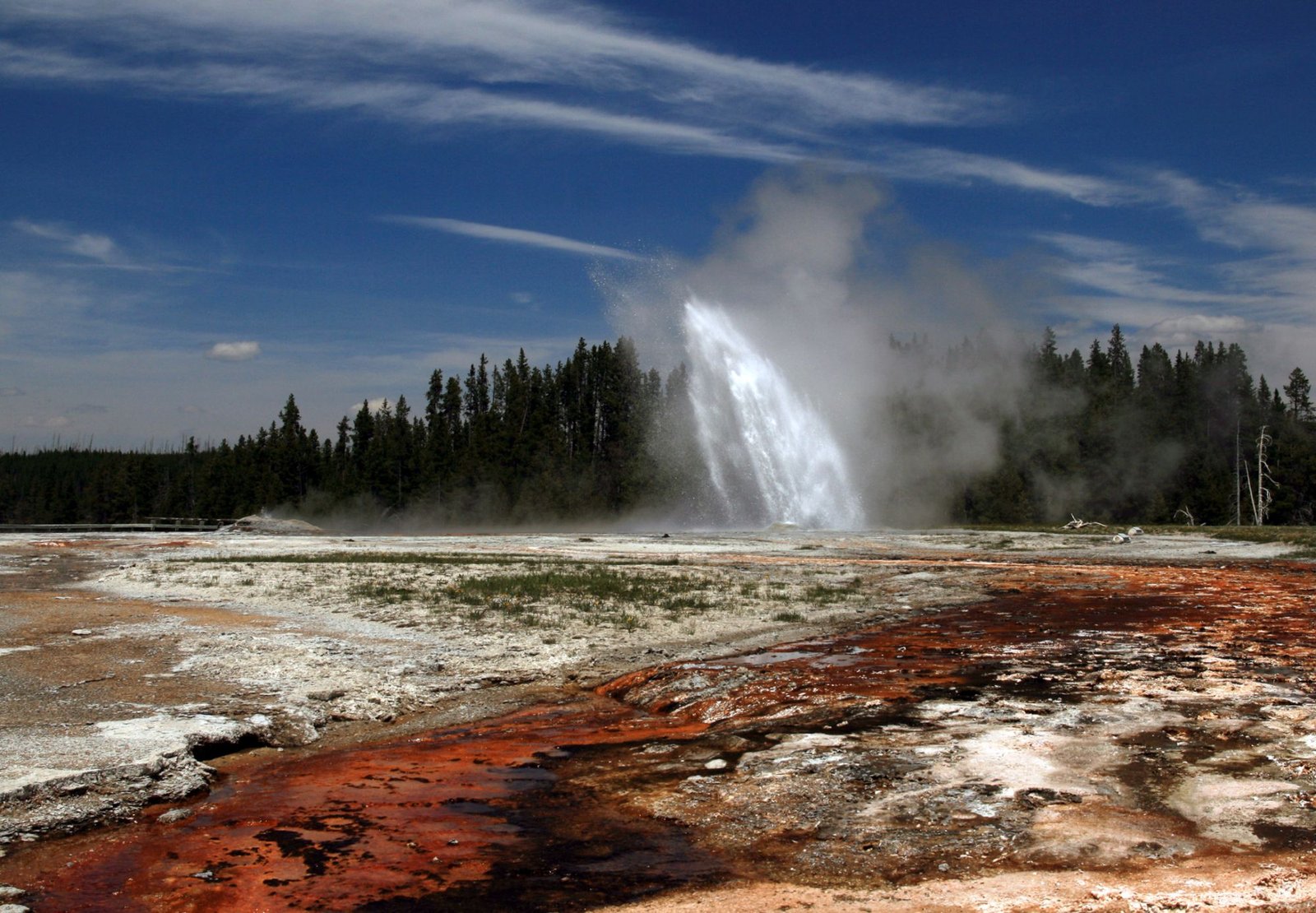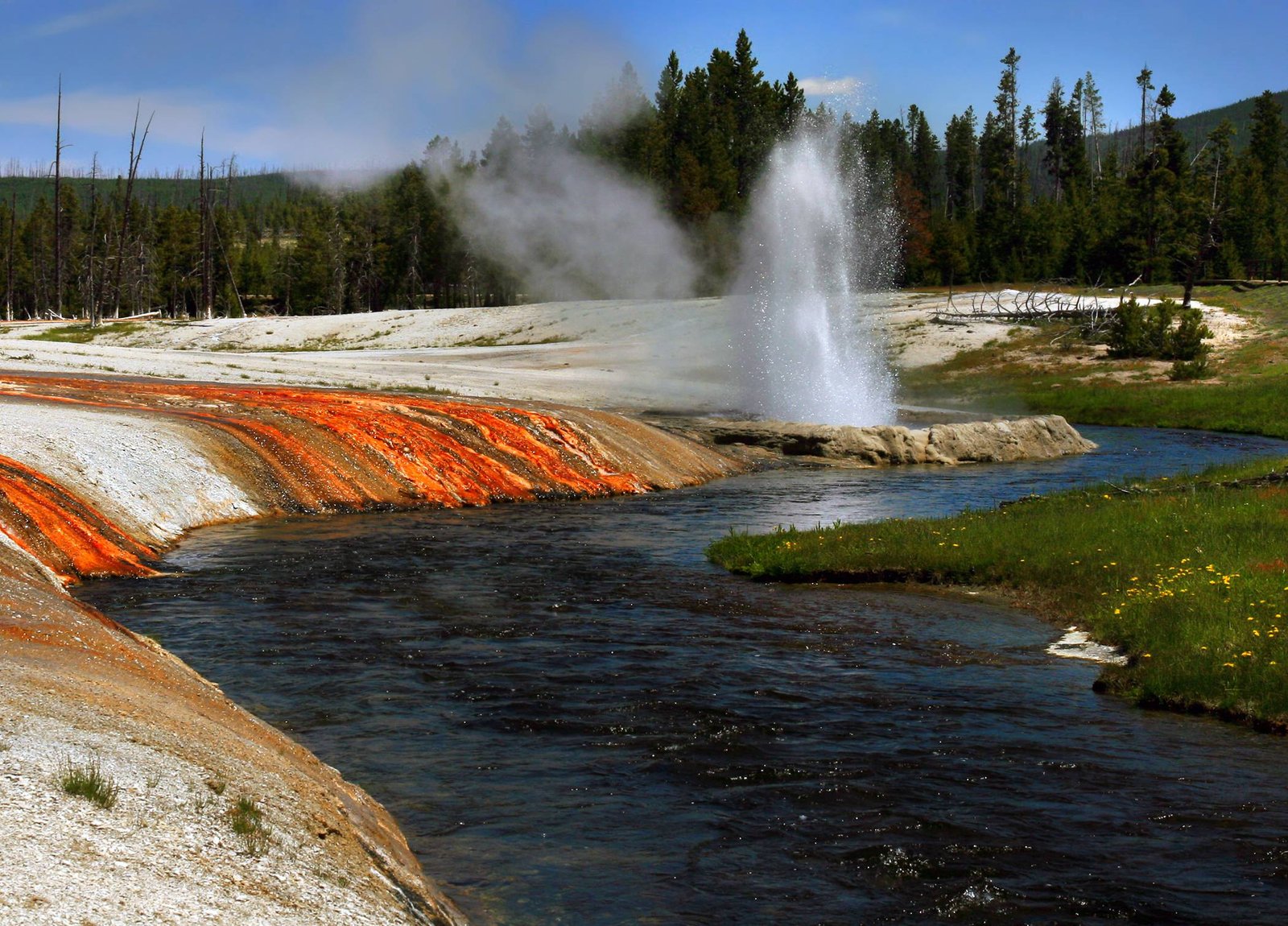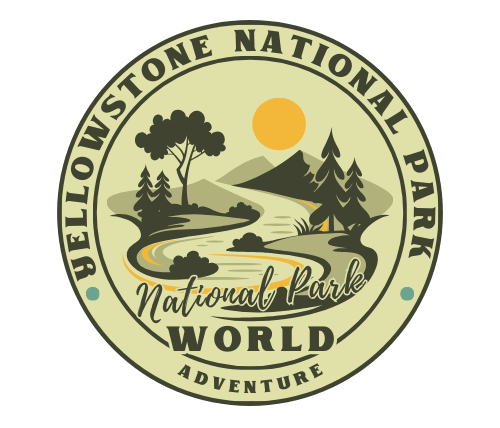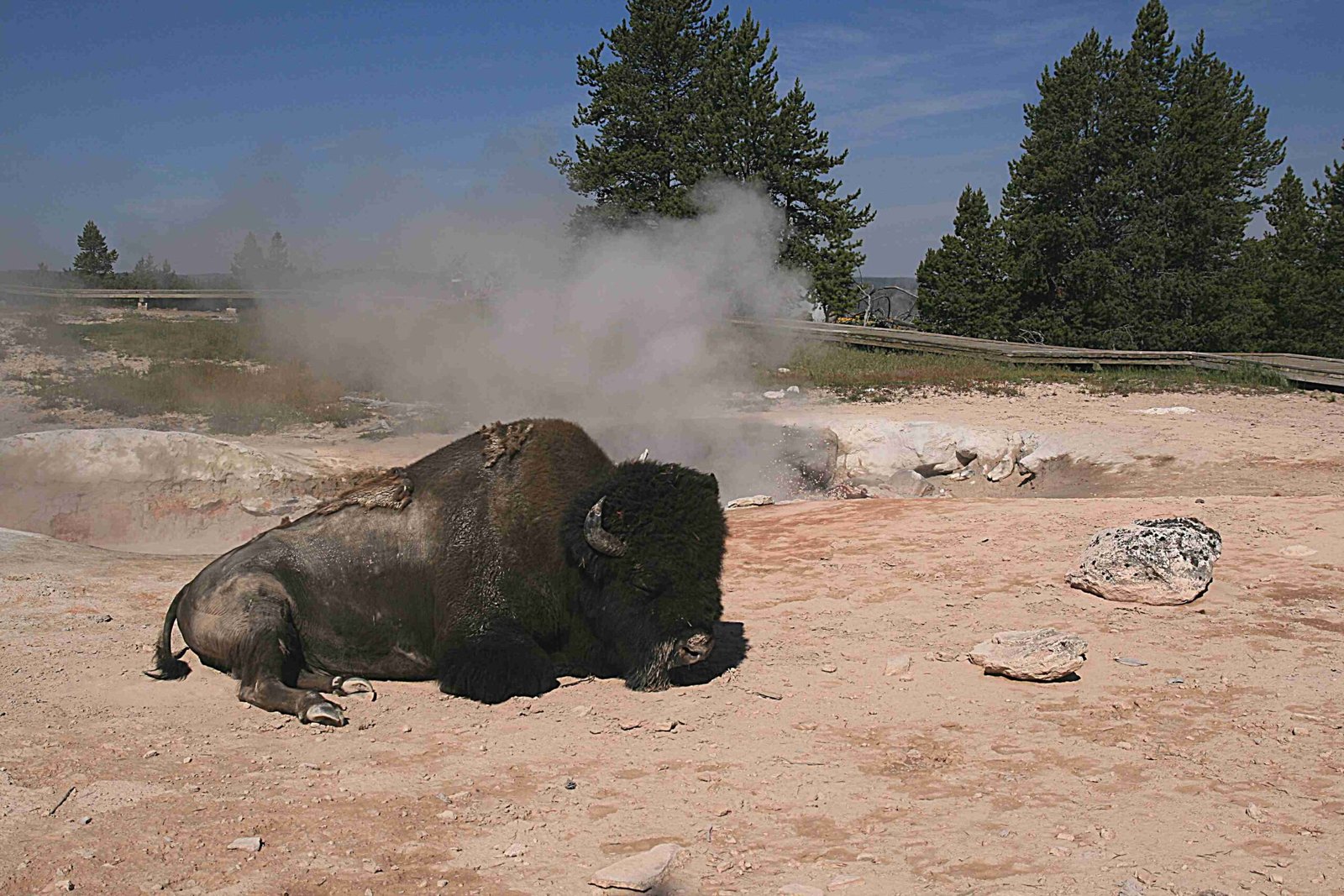Fishing Cone in Yellowstone National Park is a fascinating geothermal feature located in West Thumb Geyser Basin. This cone-shaped hot spring, situated on the shore of Yellowstone Lake, has a rich history and unique characteristics. Despite its name, fishing is no longer allowed at this location due to safety concerns and conservation efforts. The cone’s distinctive shape and its historical significance make it a point of interest for park visitors.
What is the History of Fishing Cone?

Fishing Cone has a colorful past that reflects the changing attitudes towards conservation and safety in Yellowstone National Park:
- Early Practices: In the late 19th and early 20th centuries, anglers would catch fish from Yellowstone Lake and cook them directly in the hot spring.
- **”Cook-on-the-Hook”: This practice, known as “cook-on-the-hook,” involved dropping a freshly caught fish into the boiling waters of Fishing Cone.
- Safety Concerns: The practice was eventually banned due to the dangers posed by the unpredictable nature of the hot spring.
- Conservation Efforts: As awareness of the fragile ecosystem grew, fishing near the cone was prohibited to protect both visitors and the natural environment.
Why is Fishing Prohibited at Fishing Cone?

Despite its name, fishing is strictly forbidden at Fishing Cone for several reasons:
- Safety Hazards:
- The hot spring can erupt unexpectedly, posing a significant risk to anyone nearby.
-
The ground around the cone is unstable and can collapse under a person’s weight.
-
Environmental Protection:
- Fishing activities can damage the delicate thermal features and surrounding ecosystem.
-
The practice of cooking fish in the hot spring can introduce harmful substances into the water.
-
Preservation of Natural Features:
- Limiting human interaction helps maintain the cone’s natural state and appearance.
- It allows visitors to observe and appreciate the feature without altering its characteristics.
What are the Unique Features of Fishing Cone?
Fishing Cone stands out among Yellowstone’s thermal features due to its distinctive characteristics:
| Feature | Description |
|---|---|
| Shape | Cone-shaped hot spring rising from the lake shore |
| Location | Situated on the edge of Yellowstone Lake in West Thumb Geyser Basin |
| Temperature | Water temperature can reach boiling point (approximately 200°F or 93°C) |
| Activity | Occasional small eruptions and constant steaming |
| Color | Varies depending on the presence of thermophilic bacteria |
How Can Visitors Safely Observe Fishing Cone?
While fishing is not allowed, visitors can still enjoy and learn about Fishing Cone:
- Boardwalk Access:
- A designated boardwalk provides safe viewing of Fishing Cone and other thermal features.
-
Stay on the marked paths to protect yourself and the environment.
-
Ranger-led Programs:
- Join guided tours to learn about the geology and history of the area.
-
Rangers provide insights into the cone’s formation and significance.
-
Photography Opportunities:
- Capture the beauty of Fishing Cone from designated viewing areas.
-
Best times for photography are often early morning or late afternoon for optimal lighting.
-
Interpretive Signage:
- Read informational displays near the feature to understand its geological and historical context.
What Other Attractions are Near Fishing Cone?
While Fishing Cone is a notable feature, the surrounding area offers additional points of interest:
- West Thumb Geyser Basin: Explore other thermal features in this scenic basin.
- Yellowstone Lake: Enjoy views of the largest high-elevation lake in North America.
- Grant Village: Visit nearby facilities for amenities and additional information.
- Wildlife Viewing: Keep an eye out for local fauna, including waterfowl and occasionally larger mammals.
How Has the Perception of Fishing Cone Changed Over Time?
The way Fishing Cone is viewed and managed has evolved significantly:
- Early Exploitation:
- Initially seen as a novelty and tourist attraction for fishing and cooking.
-
Promoted in early park literature as a unique experience.
-
Shift in Management:
- Gradual recognition of the need for conservation and safety measures.
-
Implementation of restrictions to protect both visitors and the natural feature.
-
Modern Appreciation:
- Now valued as an important geological and historical site.
- Emphasis on education and preservation rather than recreational use.
What Role Does Fishing Cone Play in Yellowstone’s Ecosystem?
Although small, Fishing Cone contributes to the park’s diverse geothermal landscape:
- Habitat: Provides a unique environment for thermophilic bacteria and other microorganisms.
- Geological Indicator: Offers insights into the park’s underlying volcanic activity.
- Water Chemistry: Contributes to the complex chemical makeup of Yellowstone Lake.
- Educational Value: Serves as a focal point for teaching about geothermal processes and conservation.
In conclusion, while Fishing Cone Yellowstone National Park no longer serves its namesake purpose, it remains a fascinating geological feature that tells a story of changing attitudes towards nature and conservation. Visitors can appreciate its beauty and significance while respecting the park’s efforts to preserve this unique hot spring for future generations.
References:
1. Yellowstone National Park – Fishing Regulations 2024
2. Catch a Fish – Yellowstone National Park
3. Fly Fishing Yellowstone National Park: Angler’s Paradise

